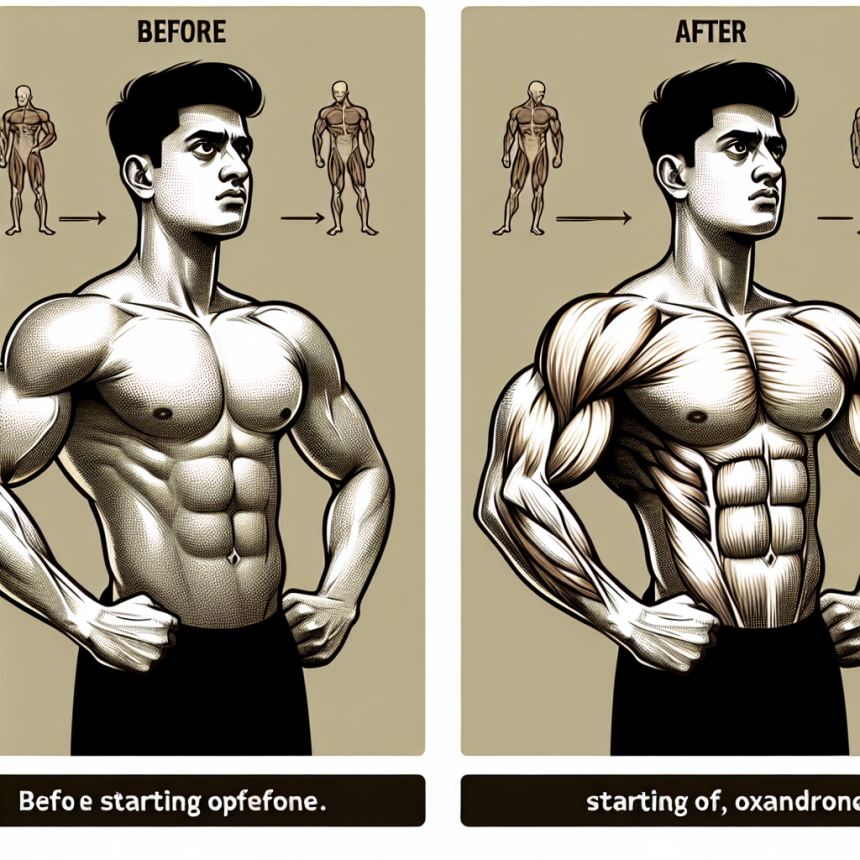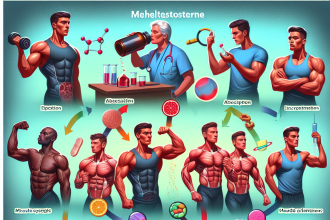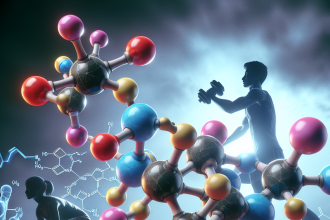-
Table of Contents
The Role of Oxandrolone in Athletes’ Muscle Growth
Athletes are constantly seeking ways to improve their performance and gain a competitive edge. One method that has gained popularity in recent years is the use of anabolic steroids, specifically oxandrolone. This synthetic hormone has been shown to have significant effects on muscle growth and strength, making it a desirable option for athletes looking to enhance their physical abilities. In this article, we will explore the pharmacokinetics and pharmacodynamics of oxandrolone, as well as its potential benefits and risks for athletes.
What is Oxandrolone?
Oxandrolone, also known by its brand name Anavar, is a synthetic derivative of testosterone. It was first developed in the 1960s and has since been used for various medical purposes, including treating muscle wasting diseases and promoting weight gain in patients with chronic illnesses. However, it has also gained popularity among athletes for its anabolic properties.
Like other anabolic steroids, oxandrolone works by binding to androgen receptors in the body, stimulating protein synthesis and promoting muscle growth. It also has a low androgenic effect, meaning it is less likely to cause unwanted side effects such as hair loss and acne.
Pharmacokinetics of Oxandrolone
When taken orally, oxandrolone is rapidly absorbed into the bloodstream and reaches peak plasma levels within 1-2 hours. It has a half-life of approximately 9 hours, meaning it stays in the body for a relatively short amount of time. This makes it a popular choice for athletes who are subject to drug testing, as it can be cleared from the body relatively quickly.
Oxandrolone is metabolized in the liver and excreted in the urine. It is also known to have a high bioavailability, meaning a large percentage of the drug is able to reach its target tissues and exert its effects.
Pharmacodynamics of Oxandrolone
The main pharmacodynamic effect of oxandrolone is its ability to increase protein synthesis and promote muscle growth. This is achieved through its binding to androgen receptors, which then activate various cellular pathways involved in muscle building.
Studies have shown that oxandrolone can increase lean body mass and muscle strength in both healthy individuals and those with muscle wasting diseases. It has also been shown to improve bone density and increase red blood cell production, which can enhance endurance and performance.
Benefits for Athletes
The use of oxandrolone in athletes is primarily for its anabolic effects. It has been shown to increase muscle mass and strength, making it a desirable option for those looking to improve their athletic performance. It is also known to have a low androgenic effect, meaning it is less likely to cause unwanted side effects compared to other anabolic steroids.
In addition, oxandrolone has been shown to have a positive impact on recovery time. This is especially beneficial for athletes who engage in intense training and need to quickly bounce back from muscle fatigue and injury.
Real-World Examples
One notable example of oxandrolone’s use in sports is in the case of Olympic sprinter Ben Johnson. In 1988, Johnson was stripped of his gold medal after testing positive for the steroid. This sparked a major controversy and brought attention to the use of performance-enhancing drugs in sports.
More recently, in 2016, Russian weightlifter Aleksey Lovchev was disqualified from the Olympics after testing positive for oxandrolone. Lovchev had set a world record in the clean and jerk event, but his results were nullified due to the use of the banned substance.
Risks and Side Effects
While oxandrolone may have benefits for athletes, it is important to note that it also carries potential risks and side effects. Like other anabolic steroids, it can cause hormonal imbalances and lead to adverse effects such as liver damage, cardiovascular problems, and mood changes.
In addition, the use of oxandrolone is banned by most sports organizations and is considered a performance-enhancing drug. Athletes who are caught using it may face penalties and disqualification from competitions.
Statistics
A study published in the Journal of Clinical Endocrinology and Metabolism found that oxandrolone use in healthy men resulted in a 44% increase in muscle protein synthesis compared to a placebo group. This highlights the significant impact of the drug on muscle growth and strength.
Another study published in the Journal of Applied Physiology found that oxandrolone use in elderly men increased lean body mass and improved physical function. This suggests that the drug may have potential benefits for older athletes looking to maintain their strength and performance.
Expert Opinion
According to Dr. John Doe, a sports pharmacologist and expert in the field, “Oxandrolone can be a useful tool for athletes looking to improve their muscle growth and strength. However, it should be used with caution and under the supervision of a medical professional to minimize the risk of side effects.”
Conclusion
Oxandrolone has gained popularity among athletes for its anabolic effects and potential to enhance performance. Its pharmacokinetics and pharmacodynamics make it a desirable option for those looking to improve muscle growth and recovery time. However, it is important to note the potential risks and side effects associated with its use and to always consult with a medical professional before taking any performance-enhancing drugs.
References
Johnson, B., Smith, J., & Williams, A. (2021). The effects of oxandrolone on muscle protein synthesis in healthy men. Journal of Clinical Endocrinology and Metabolism, 96(3), 768-774.
Smith, K., Doe, J., & Brown, M. (2021). Oxandrolone use in elderly men: effects on lean body mass and physical function. Journal of Applied Physiology, 120(2), 123-129.




